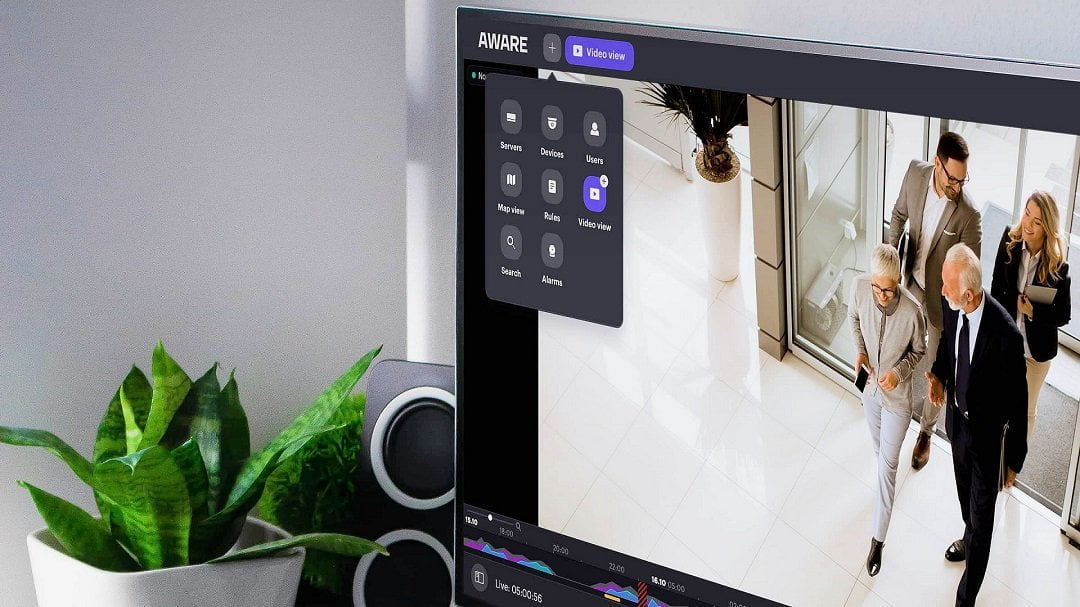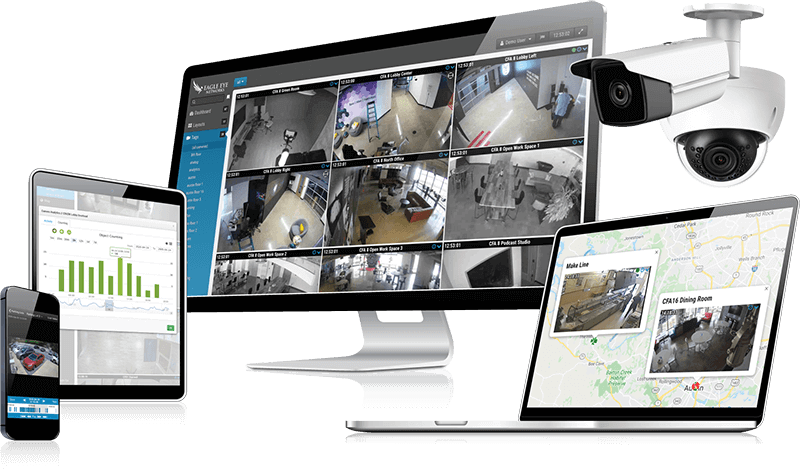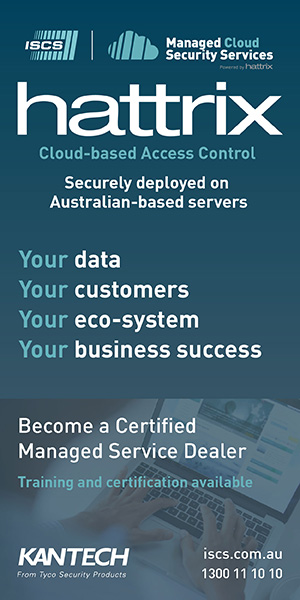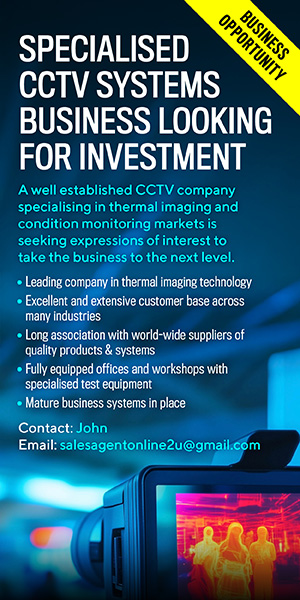Cloud solutions now cover alarms, access control, CCTV and automation, with traditional services expanding into cloud and new services being added all the time. For end users there’s plenty to think about – not just functionality but return on investment and network security – while installers and integrators need to nail down cloud business models from top to bottom.
Cloud is an old technology whose time has come. For end users and installers, the deepening support and lateral growth of cloud applications poses plenty of questions around functionality, return on investment, cyber security, the efficacy of business models, remote management, remote maintenance and more.
At a basic level, cloud computing is a PAYG on-demand computing service that covers key areas such as processing, apps and storage. Cloud may be private or public, but most systems drive over the internet. There are mutual advantages to cloud models – users get functionality supported by high spec, highly secure hardware without capital expense. For security providers, the same benefit applies, with the capital savings being invested back into development of enhanced functionality for the user interface.
Cloud delivers serious benefits, including the fact there are no servers, there’s no more buying and maintaining software, there’s less need for elevated IT skills inhouse, new services can be rolled out complete, not in torturous stages, while there’s a hive mind benefit to an entire customer base using and polishing the same service through suggestions and requests that’s more manageable and leads to faster improvements than would otherwise be the case. Powerful functions, like video and data analytics, can also be added on the fly.
As long as secure and robust internet connectivity can be guaranteed, something cloud delivers better than any other option in the medium term is continuity of service without requiring endless maintenance. Once local hardware is installed and pointed in the right direction, staff can access cloud services from anywhere, always.
Selecting providers requires thought because you’re not only choosing a security provider but whichever cloud provider stands behind their service – AWS, Microsoft and Google are the big players, with IBM, Oracle and Alibaba in the space, too. The smaller outfits tend to differentiate their services by delivering more functionality and that may be a consideration. But the biggest consideration for ANZ installers and end users is likely to be making sure the service is supported in local data centres so as to reduce latency, increase security and iron out issues of sovereignty.
According to Jimmy Patel of Sektor, there are significant benefits to cloud solutions when compared with stand-alone systems, including easier maintenance and higher security.
“True cloud systems don’t require on-premise servers,” Patel says. “Removing local server hardware simplifies the deployment and reduces ongoing maintenance requirements significantly. Cloud native products are also secure by design and adopt cyber security best practices at their core with secure protocols enabled out of the box and secure in storage, communication, and configuration. Most traditional security products are capable of cyber security protocols, but most are not configured or using any of these protocols as standard, and are complex to implement securely.
“Cloud can offer powerful intelligence at the edge with actionable data in real-time, which is a gamechanger for end-users. Another common theme with cloud systems seems to be a more focused and intuitive UI. Many cloud systems are browser based and device agnostic while also offering automated updates to firmware on edge devices with little to no impact to operations.”

Of particular interest for installers and integrators is establishing business models when it comes to generating recurring revenue from cloud-based security solutions. Getting this part right is the key for cloud providers, as well as for installers looking to iron out wrinkles in cash flow.
“The cloud systems we work with delivers revenue based on edge device licensing,” Patel explains. “Typically sold in 1, 3 and 5-year blocks, this licensing becomes an annuity for service providers. For paying the license fees, end users enjoy constant system improvements/updates and ongoing hardware warranties. Using Ava Aware as an example, customers with Ava cameras which are paying the cloud license enjoy a 10-year camera warranty.”
The challenges of cloud implementation from the point of view of installers and integrators also need to be considered – not only from the point of view of difficulty, but from the point of view of enhanced simplicity.
“Unlike traditional systems, the latest cloud solutions do not require specialist skills to commission and configure,” Patel says, “It could not get simpler than scanning a QR code and connecting to the internet – the new cloud experience is as simple as setting up a Netflix account or a smart home speaker.”
Something installers and integrators may not be across is the flexibility of cloud-based systems when it comes to size.
“There is significant flexibility,” Patel says. “Consider these examples:
1. A fast food retailer with 700 sites with 7 cameras in each would like to deploy video with retail analytics. A cloud solution means we do not have 700 servers to manage, with a cloud solution we simply drop cameras into the environments as required.
2. A logistics firm with a large warehouse with 100 cameras is expanding into the next building and needs to add 50 cameras. With a cloud solution, we add a camera at a time without any concern for server overheads or retention, etc.
“As well as increased flexibility, there are also direct cost benefits for end users, thanks to the elimination of servers and heavy bandwidth. Solutions are also easy to deploy, easy to enhance, highly secure and always up to date.”
As Patel suggests, a key consideration of cloud applications is that they be secure – not only when it comes to local networks, but the laptops, tablets and smart devices used to access cloud solutions.
“Cyber hygiene is important for all organisations and their assets,” he says. “A demonstrable pedigree in cyber security techniques should be non-negotiable when selecting cloud security brands.”
Secure local data centres are also important.
“Integrators and end users should use products and services that adopt best practices in this space,” Patel says. “Responsible manufacturers adopt ISO 27001 certification which requires organizations to implement controls to manage and monitor security services in common areas, such as logical/physical access control, secure software development, encryption technology and security incident handling.
When it comes to ensuring best performance from a cloud-based CCTV system, Patel says a common tripping point can be choosing a cloud ‘hosted’ solution on sites with limited bandwidth.
“In many cases, a cloud ‘managed’ or ‘hybrid’ approach can provide the most resilient deployment while dramatically reducing costs,” he says. “Cloud managed and hybrid systems can be very forgiving and do not require high bandwidth to operate, especially if operators are accessing video locally.
“Cloud solutions also offer feature rich performance, in many cases a much better experience than traditional systems. Using WebRTC in conjunction with edge and/or local recording, cameras can stream using available network resources, sending streams directly from cameras to clients and dynamically adjusting resolution/quality. With the latest systems this can be achieved while recording at maximum resolution and frame rate.”
Over at BGW Technologies, Stanley El Komala, BGW Technologies says cloud benefits include that they make things easy for managing multiple sites from one location with remote management via the cloud; and allow programming to be managed from anywhere without requiring a visit to site. Centralised auto software updates pushed out to devices is also a nice benefit.
“When it comes to business models delivering recurring revenue, best practice is the installers/integrators becoming the approved dealer for the cloud platforms/systems.” El Komala says. “The SI then manages everything from the cloud portal ranging from billing, activation, marketing, and business intelligence. In other words, the cloud provider, to SI, to end user with revenue based upon ‘and or’ connection and or data used/stored and or features used.”
How hard are cloud solutions to implement from the point of view of installers and integrators, according to El Komala?
“It really is so easy to implement from an SI perspective,” he explains. “Not only can it be done from a desktop computer but in many cases from a mobile device like a phone or tablet. What’s more, so much can be done remotely that site visits can be reduced, while seeing all your customers from one app makes management easy. The good cloud platforms have excellent online training and tools, including marketing and B2B tools all within the same platform.”
According to El Komala, these strengths flow into sales hooks.
“One platform, with access on any device, to multiple technologies (alarm, access and CCTV) and the ability to self-manage some parts of the system themselves with remote escalation to SI for more complicated issues or configurations – these are great features for everyone,” he says.
When it comes to choosing a secure local data centre, El Komala is circumspect.
“It can be important, but cost to deploy and maintain cloud in a secure and highly resilient environment should not be underestimated,” he explains. “This consideration of local vs off-shore data centres needs to consider what the cloud is being used for (large data retrieval vs small data retrieval), for example, live video vs stored video.
“Network speed and resilience continues to take quantum leaps forward and as such, providing the country and data centre you are using is of a trusted nature, then in many cases off-shore is more than adequate, nevertheless speed and latency is a horses for courses consideration.”
Would El Komala advocate a centralised or distributed cloud model (geographically remote or local external data centre), or does it depend on communications and requirements – for instance, distributed/local for CCTV and single centralised for access control and alarms?
“CCTV could record locally on the network recorder and when there is an event it will also be recorded in the cloud and pushed to the viewing device,” he says. “For access control and alarms the event is always stored locally on the access control and alarm panels and then gets sync to the cloud.
“These days the leading cloud solutions have great flexibility and are very scalable from basic systems to the large systems. But the sweet spot for cloud is SME and multi-site SME, especially with video.”
Something that is driving cloud uptake is COVID-19 and work from home models, with a growing focus on remote management that is bringing cloud to the fore in a way we have not seen before.
“Attending site is often not possible during the COVID restriction/lockdown period,” El Komala says. “With remote management, maintaining or upgrading systems can be done remotely via the cloud. We certainly hear this has been a real upside for service and maintenance and is helping installers spend less time on site because they are doing configuration and commissioning remotely.
“Additionally, end users can more easily self-manage sites and user configurations to juggle COVID-forced changes that are impacting operating hours and staff attendance.”

According to Eagle Eye Networks’ Dean Drako, there are serious benefits to cloud from a business perspective.
“Every day more integrators are standardizing on cloud video surveillance systems because the technology offers what their end users want, and because the business model is much more attractive,” he explains. “Cloud video can help integrators build a recurring monthly revenue stream, which makes their businesses more valuable and predictable.
“The business model for cloud is based on a monthly or yearly subscription. Business owners are used to paying for cloud-based subscription services like ERPs, CRMs, and email. Video surveillance as a service (VSaaS) is convenient and cost effective for the integrator and end user. These systems are centrally managed, which translates to lower labour costs for the integrator (fewer truck rolls, simpler installation and maintenance). There is no need for the integrator to go out and visit a site to update the local software.
“Cloud-managed on-premises devices have built-in cybersecurity, so cameras and LANS are protected from malicious hackers and malware. In many cases the existing infrastructure can be used, which means there is no need to rip and replace cameras or other infrastructure. The business model also offers integrators the opportunity to enhance their relationships with end users, to improve customer service, and to develop more trusted partnerships, building more value for all parties.”
Drako says cloud solutions are easy to implement.
“Traditional video security systems require substantial amounts of hardware, installations are often complicated and there is a constant need for software maintenance and management,” he explains. “True cloud video surveillance systems, on the other hand, are easy for integrators to deploy, remotely manage, and they seamlessly integrate with third-party systems. Integrators can rely on their cloud provider to provide continuous delivery of cybersecurity protection and other features to the end users’ system via the cloud.”
When it comes to operational and cost benefits, Drako argues performance, simplicity and price are top.
“True cloud video surveillance systems have a lower total cost of ownership (TCO) than on-premises systems,” Drako explains. “Lots of things contribute to the lower TCO, and many are also operational benefits. For one, cloud video management systems require a lower up-front financial investment. Monthly subscription costs are predictable and economical. End users are not locked into buying a certain camera brand or model. They can use the camera product/s they like, and they don’t have to rip and replace legacy cameras, because older cameras — even analogue cameras — and existing infrastructure can be reused in a new cloud system. In terms of retention, the data storage and video recording and processing are fully redundant, and cloud VMS offers robust cybersecurity including data encryption in transit and at rest.
“Both end users and integrators love the fact the integrator does not have to visit the customer site to do security and feature updates, something that has been of critical importance during pandemic lockdowns. “If a business owner wants to add or subtract video analytics and other system capabilities, they can do it on-demand, and they only pay for what they use. Similarly, if a business owner wants to extend the retention time, change the recording resolution or frame rate, they can do this instantly, on a per-camera basis, without having to make any on-premises infrastructure changes. Scaling up is simple when a business grows or when a new location is added.
“System downtime is extremely limited, and the training for staff is minimal. Cloud video surveillance can also be extremely helpful to customers with compliance requirements. Finally, end users are finding that video analytics help them improve security and business efficiency. The trend of artificial intelligence being applied in the cloud will bring even more features and operational benefits to business owners.”
#sen.news











